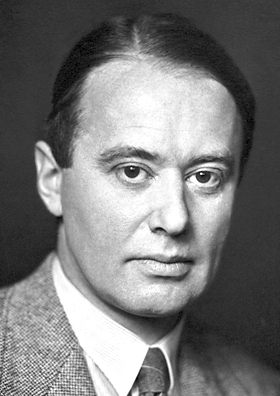Arne Tiselius
Arne Tiselius | |
|---|---|
 | |
| Born | Arne Wilhelm Kaurin Tiselius 10 August 1902 |
| Died | 29 October 1971 (aged 69) |
| Nationality | Sweden |
| Alma mater | University of Uppsala |
| Known for | Electrophoresis |
| Awards |
|
| Scientific career | |
| Fields | Chemistry |
| Institutions | University of Uppsala |
Arne Wilhelm Kaurin Tiselius (10 August 1902 – 29 October 1971) was a Swedish biochemist who won the Nobel Prize in Chemistry in 1948 "for his research on electrophoresis and adsorption analysis, especially for his discoveries concerning the complex nature of the serum proteins."[1][2][3][4][5][6][7][8][9][10][11]
Education
Tiselius was born in Stockholm. Following the death of his father, the family moved to Gothenburg where he went to school, and after graduation at the local "Realgymnasium" in 1921, he studied at the University of Uppsala, specializing in chemistry.
Career
Tiselius became a research assistant at Theodor Svedberg's laboratory in 1925 and obtained his doctor's degree in 1930 on the moving-boundary method of studying the electrophoresis of proteins. From then to 1935 he published a number of papers on diffusion and adsorption in naturally occurring base-exchanging zeolites, and these studies continued during a year's visit to H.S. Taylor's laboratory in Princeton with support of a Rockefeller Foundation fellowship. On his return to Uppsala he resumed his interest in proteins, and the application of physical methods to biochemical problems. This led to a much-improved method of electrophoretic analysis which he refined in subsequent years.
Tiselius took an active part in the reorganization of scientific research in Sweden in the years following World War II, and was President of the International Union of Pure and Applied Chemistry 1951-1955. He was Chairman of the Board for the Nobel Foundation 1960–1964.[12]
Awards and honours
- 1948 Nobel Prize for Chemistry
- 1957 Elected a Foreign Member of the Royal Society (ForMemRS).[1][13]
- 1961 Paul Karrer Gold Medal[14]
The lunar crater Tiselius was named in his honour.
Personal life
Tiselius was married, with two children. He died of a heart attack 29 October 1971 in Uppsala. His wife died in 1986.[citation needed]
References
- ^ a b c Kekwick, R. A.; Pedersen, K. O. (1974). "Arne Tiselius 1902-1971". Biographical Memoirs of Fellows of the Royal Society. 20: 401–428. doi:10.1098/rsbm.1974.0018. PMID 11615762.
- ^ Kyle, R. A.; Shampo, M. A. (2005). "Arne Tiselius--father of electrophoresis". Mayo Clinic proceedings. Mayo Clinic. 80 (3): 302. PMID 15757008.
- ^ Tiselius, A. (1937). "A new apparatus for electrophoretic analysis of colloidal mixtures". Transactions of the Faraday Society. 33: 524–1933. doi:10.1039/tf9373300524.
- ^ A Tiselius (1930). "The moving-boundary method of studying the electrophoresis of proteins". Nova Acta Regiae Societatis Scientiarum Upsaliensis. Ser. IV, Vol. 7 (4).
- ^ Tiselius, A. (1968). "Reflections from Both Sides of the Counter". Annual Review of Biochemistry. 37: 1–24. doi:10.1146/annurev.bi.37.070168.000245. PMID 4875715.
- ^ Putnam, F. W. (1993). "Alpha-, beta-, gamma-globulin--Arne Tiselius and the advent of electrophoresis". Perspectives in biology and medicine. 36 (3): 323–337. PMID 7685077.
- ^ Kay, L. E. (1988). "Laboratory technology and biological knowledge: The Tiselius electrophoresis apparatus, 1930-1945". History and philosophy of the life sciences. 10 (1): 51–72. PMID 3045854.
- ^ Hjertén, S. (1973). "Dedication to Professor Arne Tiselius". Annals of the New York Academy of Sciences. 209: 5–7. doi:10.1111/j.1749-6632.1973.tb47513.x. PMID 4577171.
- ^ Hertén, S. (1972). "Arne Tiselius. 1902-1971". Journal of ultrastructure research. 39 (5): 624–628. doi:10.1016/S0022-5320(72)90126-8. PMID 4556330.
- ^ Hjertén, S. (1972). "Arne Tiselius 1902-1971". Journal of Chromatography. 65 (2): 345–348. PMID 4552643.
- ^ http://www.nobelprize.org/nobel_prizes/chemistry/laureates/1948/
- ^ http://www.nobelprize.org/nobel_organizations/nobelfoundation/history/lemmel/index.html
- ^ Nobel Lecture Electrophoresis and Adsorption Analysis as Aids in Investigations of Large Molecular Weight Substances and Their Breakdown Products from Nobelprize.org website
- ^ "List of Recipients". University of Zurich. Retrieved 5 December 2015.

